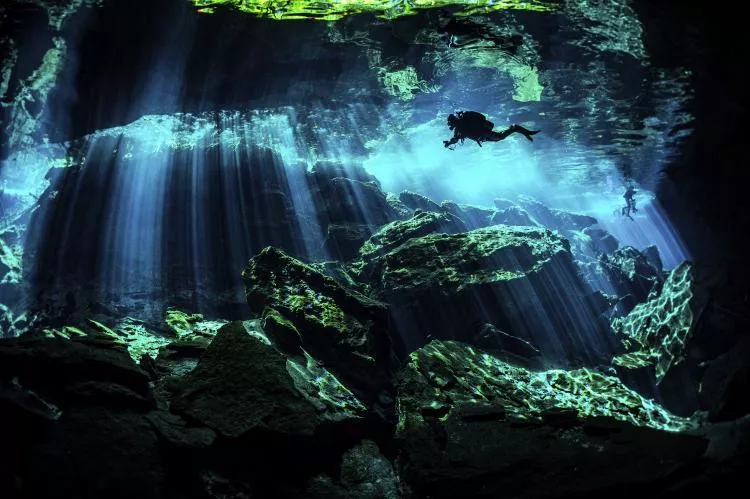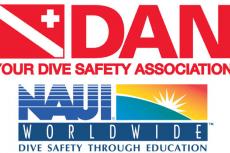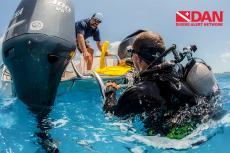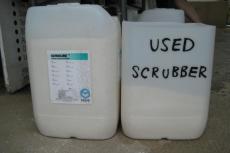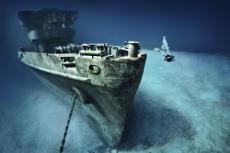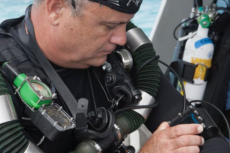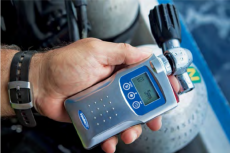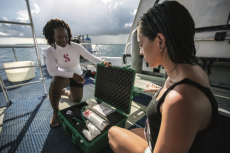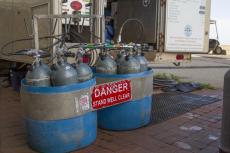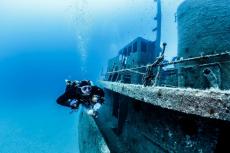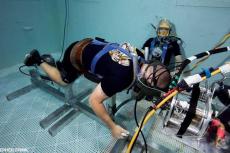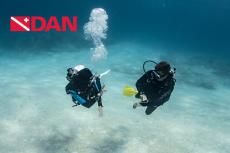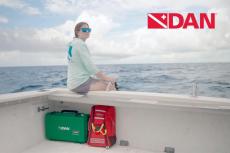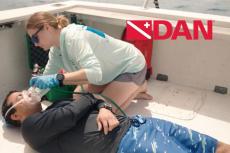Gas Management 101
It’s almost impossible to overstate the importance of gas management — unless you have gills, running out of air will get you in big trouble underwater. Planning your dive around gas consumption isn’t difficult and shouldn’t take long, but both new and experienced divers continue to put themselves in harm’s way by forgetting or forgoing this type of planning.
Checking your air a few times during a dive and coming up as the gauge nears zero is not dive planning. Before you hit the water this summer, brush up on the basics of gas management — this will help keep you safe and might even extend your bottom time.
Stick to the Plan
You wouldn’t want your pilot winging your next flight or your doctor playing your next visit by ear, so why do it while you dive? Take a minute to plan how you will manage your gas during your dive before you hit the water. Start by noting a few notable features of the dive site that will help keep you on track (e.g., the bow of the wreck or the edge of the reef), and use the rule of thirds to govern your gas management plan.
To do this, divide your initial tank pressure into thirds and plan as if you will use the first third during the descent and departure from your starting point, the second for return to the starting point and ascent, and treat the final third as a reserve in case of an emergency or deviation from the plan.
This won’t cover all your dives, but it is a good rule of thumb for making sure you’ll have enough gas for your dive — and it adds a level of conservatism that you wouldn’t otherwise have. Keep in mind that current, workload and depth changes can all make the rule of thirds less relevant or insufficient, so make sure to double check your dive profile against your gas plan before you head in.
Check Your Gauge
Checking gauges should be second nature for every diver, but in light of the frequency of out-of-air incidents, it bears repeating. Monitoring your air, depth, and dive time are essential for making sure you return to your entry point without injury, but it can be easy to get distracted and forget to check your gauges. This is especially true if you’re a new diver or if you’re diving a new or exciting site. It is critical to remind yourself to check your gauges as frequently as possible.
Whether you remind yourself to look at a gauge every minute or every few kick cycles or you keep it in your hand as a reminder during a particularly deep dive, take the initiative to monitor your air consumption regularly throughout a dive. Checking your pressure gauge regularly can also tell you if equipment is functioning properly. A slow leak may not be obvious on the surface, but an abnormally increased air consumption rate during a dive can clue you in on a leak before it leads to a serious problem.
Consumption Conundrums
There are many factors that increase your gas consumption on a dive, but the most common are depth, weighting, workload and personal fitness. As you dive deeper, work harder or carry more equipment your gas consumption will increase regardless of your experience. If you are trying to improve your gas consumption, start by checking your weight before a dive and removing any excess lead.
You can further reduce your consumption rate by fine-tuning your trim and buoyancy, improving your fitness and minimizing the amount of gear you bring on a dive. If possible, try to minimize your exertion, too. Factors such as wave action and current will work against you, but minimizing your exertion will help you extend your gas supply while also minimizing your risk of decompression sickness.
For more information, visit: DAN.org


